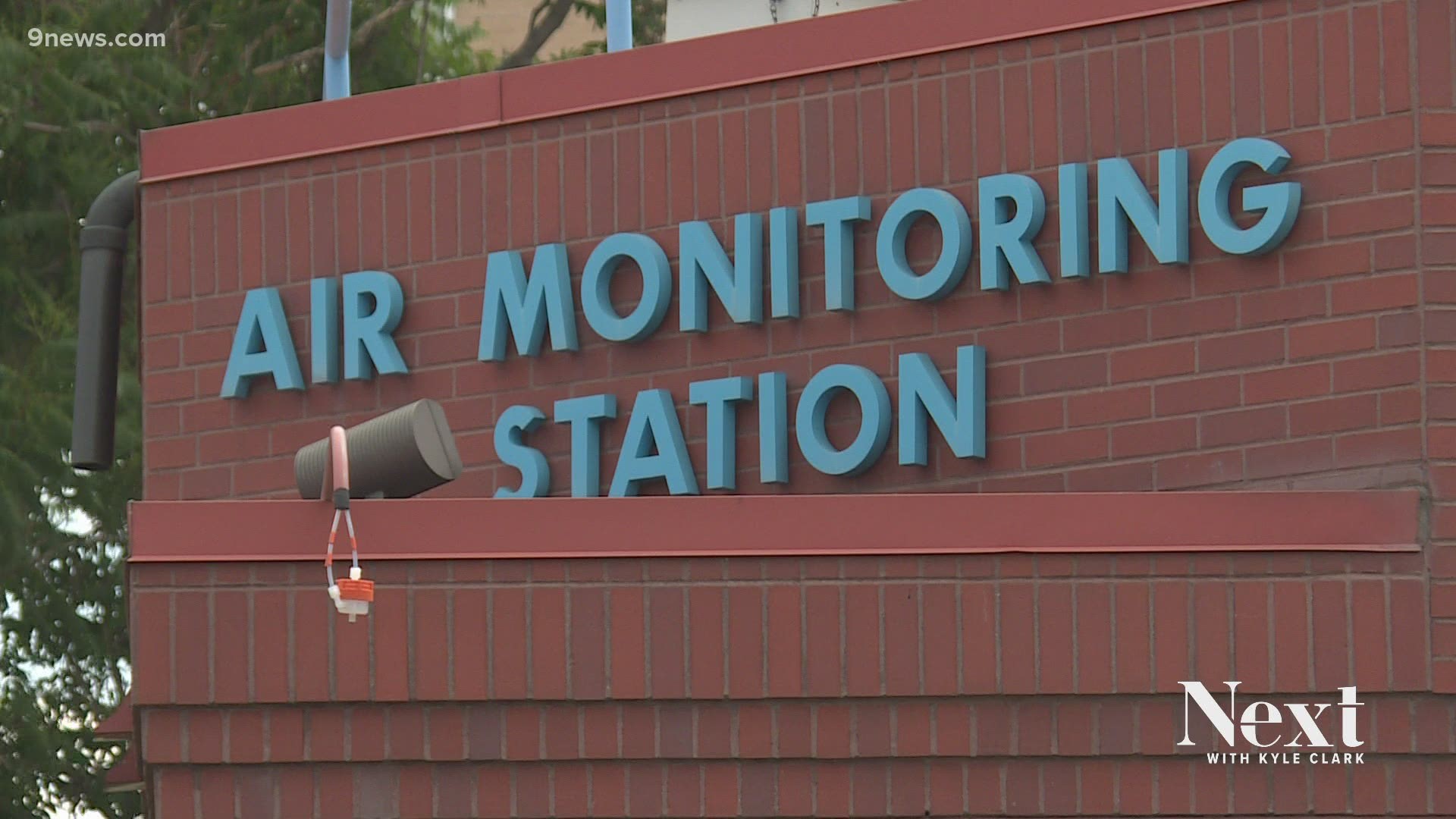DENVER — Normally, electronic highway signs alert of traffic jams or road hazards. Lately, they have warned of an "Ozone Action Day Alert."
That is the warning from the Colorado Department of Public Health and Environment (CDPHE) that the air quality is going to be unhealthy.
There are multiple websites that allow you to check the air quality near where you are located. Those sites include numbers that probably do not mean much to the average user. The lower the number, the better. And just like a stoplight, you want to see more green and fewer red dots.
"As far as the colors are concerned, green is good. The short-term air quality index for that monitor is in the good category," said Scott Landes, the Meteorology and Prescribed Fire Supervisor for CDPHE. "Now, when you get into yellow, that's going to be moderate, and upwards of orange and red, then you talk about unhealthy for sensitive groups and even worse than that."
Landes is currently monitoring fires in California and Oregon to see how they will impact the air quality in Colorado.
"I don't anticipate any major smoke impacts over the next couple of days, but we may see a bit more haze in the sky as we go through the middle part of the workweek," said Landes.
The state air quality monitoring website shows CDPHE's monitoring stations.
"When you start seeing orange on that map, that's when people should start taking action, particularly those who have a respiratory ailing: asthma, COPD. When you start seeing orange, that's when the air is starting to get unhealthier," said Landes.
Another website, PurpleAir, shows monitors used by local governments, school districts and others who order a monitor.
Michele tweeted Next with Kyle Clark a question about a PurpleAir monitor in the Cole Neighborhood at Russell Square Park at 37th and Gaylord, showing a reading in the 200s. That monitor read near 600 on July 2. Anything 50 or more is considered good.
"Not knowing what's happening in that specific neighborhood, I would think it's an anomaly. If you look at monitors throughout the rest of the Denver Metro Area, it's an outlier, it's running much higher than the rest of the monitors," said Landes. "When you start seeing just these very isolated areas, there could be something locally going on or we could also be talking about some quality issues with the monitor itself."
A spokesman with PurpleAir suggested the monitoring station may be set up inside or could be reading high because of a lack of maintenance.
"Purple Air monitors are accurate, but not as accurate as the regulatory monitors. We don't know how they're sited, we don't know how people are having them set up, so it's really difficult to know exactly what's going on with any type of quality control with these monitors," said Landes.
Landes suggested an Environmental Protection Agency-run website that compiles the state's monitors, PurpleAir monitors and other air quality monitors nationwide.
"The really good thing about it is that it distinguishes between the different types of monitors. So, you can tell precisely what's a lower-cost monitor like a PurpleAir monitor versus a regulatory monitor like we have at CDPHE," said Landes. "They do a quality check on these PurpleAir monitors, and if they start seeing some flaky readings, if they see one of the channels of the monitor not working properly, they will remove that from the map until they start seeing more consistent, accurate data."
That Environmental Protection Agency website also revealed an annual phenomenon that occurred at midnight on July 5 on air quality monitors in Denver, Longmont, Greeley and across the state.
"Fireworks. Happens every early morning July 5," said Landes. "We saw a number of our regulatory monitors, starting the night of July 4 into the early morning of July 5, read much higher than they normally would, so in all likelihood that spike was due to fireworks."
SUGGESTED VIDEOS: Full Episodes of Next with Kyle Clark

